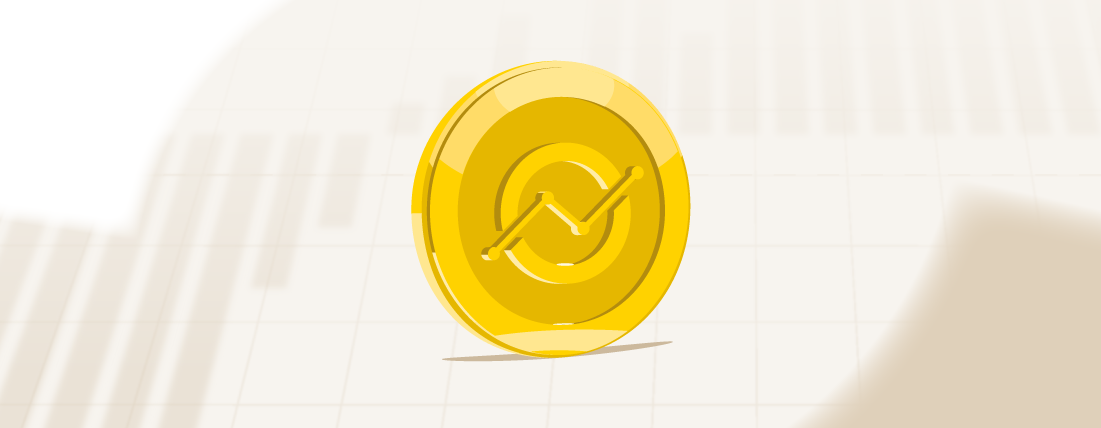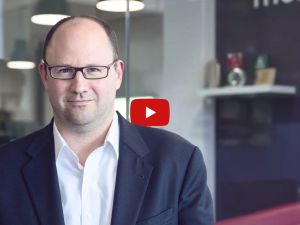If you have £1,000 set aside and are considering investing for the first time, it can be difficult to know where to begin. With so many options available, understanding how to make your money work harder is key. This guide explains how to invest £1,000 effectively, helping you identify suitable options based on your goals, time horizon, and attitude to risk.
At a Glance
- £1,000 is enough to start building a diversified investment portfolio.
- Begin by clarifying your goals, time horizon, and comfort with risk.
- Consider tax-efficient options such as Stocks & Shares ISAs or pensions.
- Diversification and regular contributions are fundamental to long-term growth.
- Returns are not guaranteed, and the value of investments can go down as well as up.
What to know before investing £ 1,000
Before going any further, you must consider your risk profile attitude towards risk. You can save £1,000 with very little or no risk at all. However, you have to take risk into the equation if you are contemplating how to invest £1,000. Therefore, the first thing is understanding the difference between saving and investing.
Saving vs. Investing
Saving and investing both help you grow your money, but they work in very different ways:
- saving focuses on protecting your capital and earning interest
- investing aims for higher long-term growth by taking on more risk.
With inflation in the UK currently around 3% and set to growth at 3,4% by the end of 2025 (according to the International Monetary Fund), money kept in low-interest accounts can lose value in real terms. Investing, although riskier, offers the potential to outpace inflation and build wealth over time.
Here is a comparison table savings vs. investments that can help to better understand the differences.
|
Saving |
Investing |
|
|
Goal |
Preserve money for short-term needs or emergency funds |
Grow wealth over the medium to long term |
|
Risk level |
Very low: capital usually protected |
Medium to high: value can rise or fall |
|
Typical returns |
4–5% (best easy-access rates, update October 2025) |
5–8% average long-term market return (not guaranteed) |
|
Access to money |
Usually instant or short notice |
Best left untouched for several years |
|
Inflation impact |
Can erode real value over time |
Aims to outpace inflation |
|
FSCS protection |
Up to £85,000 per bank |
Not covered (except in certain cash holdings) |
Understanding Your Financial Goals
Understanding your financial goals is a critical step in shaping your investment strategy. Whether you’re planning for retirement, saving for a significant purchase, or looking to grow your wealth, having clear and defined objectives will guide your decisions. If you’re considering how to invest £1,000, for example, knowing your financial goals will help you choose the right investment vehicles, risk tolerance, and time horizon.
By aligning your investment choices with your unique financial needs and aspirations, you can create a tailored plan that meets your current requirements and also sets you on a path towards long-term financial success. This alignment ensures that every investment decision, big or small, is made with purpose and direction, maximising the potential for growth and minimising unnecessary risks.
Is £1,000 enough to start investing?
£1,000 is more than enough if you’re thinking of investing. You could even start with less, let’s say £500. But let’s stick with the original figure and think in terms of how to invest £1,000. What are your best options?
How to Invest £1,000 in the UK: Best Investment Options for Beginners
Investor engagement has remained strong across the UK, as more people look to put their savings to work and achieve better long-term returns. If you’re considering how to invest £1,000, the following options outline some of the most accessible and effective ways to begin.
- Stocks and Shares
- Bonds
- Mutual Funds
- Managed Funds
- Exchange Traded Funds (ETFs)
- Peer-to-peer lending
- Pensions
- Trading online and cryptos
- Robo investment platforms
If you’re lucky enough to be asking yourself how to invest 1,000 pounds per month, then a pension like a SIPPS has got to be a serious consideration. The initials SIPPS stand for Self-Invested Personal Pension Schemes.
How to Invest £1,000 in Stocks and Shares
Stocks and shares remain one of the most common ways to invest for long-term growth as they allow you to buy a stake in companies and benefit from potential capital appreciation and dividends, though values can fall as well as rise.
For new investors, a Stocks and Shares ISA is often the simplest way to begin because it offers tax-free growth and flexibility, allowing you to hold individual shares, funds, or ETFs such as those tracking the FTSE 100 or S&P 500.
- Use a managed platform such as Moneyfarm for a professionally built, diversified portfolio.
- Choose an ISA wrapper like a Stocks and Shares ISA to benefit from tax advantages.
- Focus on diversification, spreading your £1,000 across markets or ETFs rather than picking individual shares.
Bonds
Bonds are fixed-income investments that allow you to lend money to a government or company in exchange for regular interest payments and the eventual return of your capital. They tend to be less volatile than equities, making them useful for balancing risk within a diversified portfolio.
Common types of bonds include:
- Gilts: issued by the UK government, considered very low risk.
- Corporate bonds: issued by companies, typically offering higher yields but with greater risk.
- Index-linked bonds: their value rises with inflation, helping protect purchasing power.
Bonds can provide a steady income stream and stability, but they are not risk-free as prices can fall if interest rates rise, and corporate issuers may default.
Mutual Funds
Mutual funds pool money from many investors to buy a diversified portfolio of assets, such as shares, bonds, or other securities.
Each investor owns a proportional share of the fund’s overall holdings, making it an easy way to access professional management and diversification without selecting individual investments.
Typical types of mutual funds include:
- Equity funds: focus on company shares for potential long-term growth.
- Bond funds: invest mainly in government or corporate bonds for income and lower volatility.
- Balanced funds: combine equities and bonds to balance risk and return.
Mutual funds can suit investors seeking a hands-off approach, but they often charge ongoing management fees.
Remember that returns depend on the fund manager’s decisions and market performance.
Managed Funds
Managed funds pool investors’ money into a professionally run portfolio, where a fund manager selects and adjusts holdings with the goal of outperforming a market benchmark. These funds can focus on a specific sector, index, or region, offering instant diversification and expert oversight.
Common types of managed funds include:
- Investment Trusts: listed companies whose shares trade on the stock exchange.
- OEICs (Open-Ended Investment Companies): funds that expand or contract based on investor demand.
- Unit Trusts: similar to OEICs but structured differently under UK regulation.
Managed funds are usually professionally managed, so they typically charge higher fees than passive options like ETFs.
Exchange Traded Funds (ETFs)
Exchange Traded Funds (ETFs) are funds that track the performance of a market index, such as the FTSE 100 or S&P 500, and trade on the stock exchange like individual shares.
Common types of ETFs include:
- Equity ETFs: track stock market indices for long-term growth potential.
- Bond ETFs: focus on fixed-income assets for added stability.
- Thematic or sector ETFs: invest in areas such as clean energy or technology.
ETFs are popular among both new and experienced investors for their transparency and flexibility. However, as market-traded products, their value can fluctuate, and you may get back less than you invest.
Peer-to-Peer Lending
Peer-to-peer (P2P) lending allows you to lend money directly to individuals or businesses through online platforms, earning interest in return. It removes the traditional bank as an intermediary, potentially offering higher returns, but also greater risk.
- Higher potential returns as interest rates can exceed those of savings accounts.
- Credit risk, borrowers may default, and your capital is not guaranteed.
- No FSCS protection, as P2P loans are not covered by the Financial Services Compensation Scheme.
P2P lending can be a way of diversification, but they should always represent a small portion of your portfolio due to the higher risk of loss.
Pensions
Pensions are one of the most effective and tax-efficient ways to save for retirement. They allow you to invest for the long term while benefiting from government tax relief and, in many cases, employer contributions. Your pension pot grows through regular contributions and investment returns over time.
The main types of pensions include:
- Workplace pensions: arranged by your employer, often with matched contributions.
- Personal pensions: set up by individuals who want more flexibility and control.
- Self-Invested Personal Pensions (SIPPs): offer full control over where your money is invested, such as funds, shares, or ETFs.
For most investors, pensions form the foundation of a retirement plan, combining tax advantages with the power of compounding.
Trading online and cryptos
Online trading platforms allow investors to buy and sell assets such as shares, currencies, or commodities directly through digital interfaces. This approach offers flexibility and control but also carries significant risk, particularly for inexperienced investors.
Cryptocurrencies such as Bitcoin and Ethereum have gained popularity for their high growth potential, yet they remain highly volatile and speculative. These digital assets are not backed by any central authority and fall outside most forms of UK regulatory protection, meaning investors could lose all their money.
Before considering trading or crypto investing:
- Assess your risk tolerance: volatility can lead to large short-term losses.
- Use FCA-regulated platforms: to ensure better consumer protection where available.
- Limit exposure: keep speculative assets to a small portion of your overall portfolio.
Trading and crypto assets may suit experienced investors seeking diversification, but they are unsuitable as the foundation of a long-term investment plan.
Copy Trading: the Best 1,000 Pounds Investment to Trade Passively?
If you don’t have the knowledge and confidence to be hands-on, you might be better off going down the Copy-Trading path. Copy-Trading mirrors the portfolio and trading of experienced investors. This could be the way to go if you want to know how to invest £1,000 with minimal involvement. There is little or no stress. Your chosen trader determines which assets are to be bought and sold.
If you are considering where to invest £1,000, Copy-Trading is quite a good idea for beginners, and you can take a look at the day trading sites for a further explanation and some platform suggestions.
Should You Invest £1,000 in Bitcoin?
Bitcoin remains the most widely recognised cryptocurrency and frequently makes headlines, albeit not always for positive reasons. Since its inception it has delivered spectacular gains; yet its value has also experienced sharp reversals. For instance, in 2021 BTC traded around US$70,000; by early 2022 it had fallen to approximately US$35,000.
As of October 2025, it is trading in the region of US$110,000.
This level of volatility makes Bitcoin a highly speculative investment. If you ask, “Is Bitcoin the best place to invest £1,000?” most financial professionals would advise caution, unless you are prepared to hold it for the long term and accept the possibility of significant swings in value.
Robo Advisors
A Robo adviser service could be the best place to invest £1,000 if you are comfortable with this type of service, which relies on preset algorithms. Some Robo advice services are pretty much 100% automated. In contrast, others, such as those offered by Moneyfarm, offer Robo services with a human touch featuring three layers of human intervention built-in.
How to turn £1,000 into £10,000
Knowing how to double £1,000 or turn £1,000 into £10,000 is challenging but it’s possible with careful planning and a long-term perspective. There are a number of ways to significantly grow your £1,000 investment here in the UK. Here are a few strategies to consider:
- Invest in high-potential growth stocks or diversified ETFs.
- Invest for the long term to ride out short-term stock market volatility.
- Diversify your portfolio across different asset classes, such as stocks, mutual funds, and real estate.
- Regularly contribute additional funds to accelerate growth.
- Reinvesting your earnings will help your wealth grow faster through compound interest.
- Do not panic sell, stay calm and do not sell your investments when the market is down. Also, try not to get into the mindset of FOMO (fear of missing out), as it might lead to irrational investment decisions.
- Consider seeking advice from a financial advisor.
There is no magic formula when it comes to how to invest £1,000 and turn it into £10,000. However, if you are willing to put in the work, it is possible to achieve your goals. It is important to note that there is no guarantee that if you invest £1,000, it will turn into £10,000 because any investment carries some degree of risk.
Invest £1,000 a month with a SIPP
SIPP schemes entered the mainstream here in the UK following the 2015 pension freedoms, which allowed people more control over their retirement savings. In 2020, it was estimated that people had invested £180 billion into approximately 2 million products. So, it’s never too early to start squirrelling money away for your retirement: – the more, the merrier. But getting your financial planning right is of paramount importance and learning how to invest on a budget will stand you in good stead.
If you knew how to invest £1,000 into a SIPP every month, and you’ve been doing it religiously ever since, you will soon have a considerable nest egg for your twilight years. While such an investment is suitable for people who transfer pensions because they want to have all of their pensions in one pot, you will be responsible for managing your investment. You will need to have the time, knowledge and confidence to go down this route, unless you decide to choose a Moneyfarm pension.
How to invest £1,000 and avoid tax
When you invest £1,000, the impact of taxes can vary depending on a number of factors, including the type of investment, the length of time you hold the investment, and your personal tax bracket.
When you are investing £1,000, capital gains tax and dividend tax can affect your investment. Generally speaking, you only have to pay taxes on the income you receive from an investment. For example, if you invest £1,000 and you make £500 profit, you will only be taxed on the profit amount.
The amount of tax you pay will also depend on the sort of investment. For instance, you must pay capital gains tax on the income from stock, bond, and other asset investments. Profits from investments in savings accounts, general investment accounts, and other income-producing assets will also be taxed.
The length of time you hold an investment will also affect how much tax you pay. For example, if you invest £1,000 for less than a year, you will pay short-term capital gains tax. However, holding an investment for more than a year means you will pay long-term capital gains tax.
Your personal tax bracket will also affect how much tax you pay. For example, a high-income taxpayer will pay a 40% tax on capital gains, while a low-income taxpayer will pay a 20% tax on capital gains.
The best way to invest £1,000 in the UK is to consider tax-advantaged accounts, such as retirement accounts or Individual Savings Accounts (ISAs), to minimise the impact of taxes on your investments. Depending on the specific account type, they offer tax advantages like tax-free growth, tax-free dividends, and income tax free withdrawals.
Taxes can be complicated, and their impact on investments can vary based on individual circumstances and local tax laws. Consulting a tax professional or accountant is recommended to receive personalised guidance for your specific situation.
Key Takeaways
-
Investing £1,000 can be an excellent first step towards building long-term wealth.
-
Every investment carries some level of risk.
-
Diversifying across different asset classes helps manage volatility and smooth returns.
-
Staying invested for the long term is often more effective than reacting to short-term market movements.
-
Regular reviews ensure your portfolio remains aligned with your goals and risk tolerance.
FAQ
You can invest £1,000 in stocks and shares, cryptocurrencies, funds, peer-to-peer lending, robo-advisory platforms, and SIPPs.
There is no fast way to make money when investing £1,000. However, you can make good returns while investing and lose money from your investments.
Most beginners invest in ETFs, index funds and SIPPs instead of individual stocks. They also use investment apps and robo-advisors due to limited financial knowledge.
*As with all investing, financial instruments involve inherent risks, including loss of capital, market fluctuations and liquidity risk. Past performance is no guarantee of future results. It is important to consider your risk tolerance and investment objectives before proceeding.





